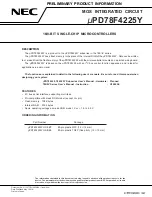
CAN Core
•
•
DCAN
CAN_RX
CAN_TX
Tx
Rx
Operating Modes
1518
SPRUH22I – April 2012 – Revised November 2019
Copyright © 2012–2019, Texas Instruments Incorporated
M3 Controller Area Network (CAN)
23.2.3.2 Loopback Mode
The loopback mode is mainly intended for hardware self-test functions. In this mode, the CAN core uses
internal feedback from Tx output to Rx input. Transmitted messages are treated as received messages,
and can be stored into message objects if they pass acceptance filtering. The actual value of the CAN_RX
input pin is disregarded by the CAN core. Transmitted messages still can be monitored at the CAN_TX
pin.
In order to be independent from external stimulation, the CAN core ignores acknowledge errors (recessive
bit sampled in the acknowledge slot of a data/remote frame) in loopback mode.
shows the connection of signals CAN_TX and CAN_RX to the CAN core in loopback mode.
Loopback mode can be activated by setting the LBACK bit in the CAN_TEST register to one.
NOTE:
In loopback mode, the signal path from CAN core to Tx pin, the Tx pin itself, and the signal
path from Tx pin back to CAN Core are disregarded. For including these into the testing, see
.
Figure 23-4. CAN Core in Loopback Mode
23.2.3.3 External Loopback Mode
The external loopback mode is similar to the loopback mode; however, it includes the signal path from
CAN Core to Tx pin, the Tx pin itself, and the signal path from Tx pin back to CAN Core. When the
external loopback mode is selected, the CAN core is connected to the input buffer of the Tx pin. With this
configuration, the Tx pin IO circuit can be tested. External loopback mode can be activated by setting the
ExL bit in the Test register to one.
shows the connection of signals CAN_TX and CAN_RX to the CAN Core in external loopback
mode.
NOTE:
When loopback mode is active (LBack bit set), the ExL bit will be ignored.
















































